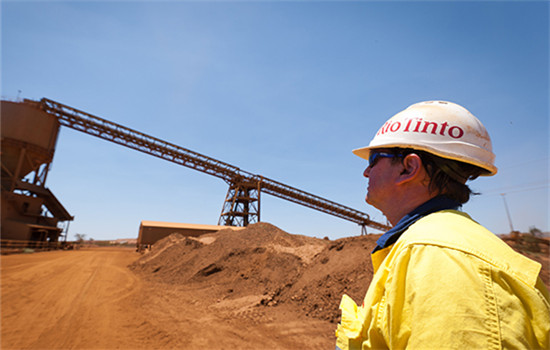
A mineworker looks at a train loader at the Rio Tinto West Angelas iron ore mine in the Pilbara, northwest of Perth, Australia. (Photo provided to China Daily)
Rio Tinto will continue to reduce its production costs as an oversupply in iron ore is expected to last for seven to 10 years, said Jean-Sebastien Jacques, chief executive officer of the company.
"Rio Tito's strategy has not changed, which is to keep our iron ore products at very low cost so that whatever the condition is, we will remain profitable," Jacques told China Daily in a group interview on Tuesday.
Jacques, who took the helm at Rio Tinto in July, said that the company has removed $6 billion of costs from its system since 2012.
The iron ore spot price was around $58 per metric ton in mid October, compared with $184 per ton in January 2011.
The company's iron ore sales volume in the third quarter fell by 5 percent year-on-year to 80.9 million tons, compared with the forecast 83.5 million tons. Its output increased 2 percent year-on-year to 83.2 million tons.
The company forecasts total annual iron ore output of between 325 and 330 million tons.
Jacques said that he is "cautiously optimistic" about the prospects for the Chinese economy.
"China is very important for Rio Tinto as our largest customer in iron ore and our largest shareholder-Chalco (Aluminum Corp of China Ltd) holds around 10 percent of Rio Tinto's shares," he said.
Wang Liqun, vice-president of the China Iron & Steel Association, said earlier that 86.7 percent of the country's iron ore was imported in the first two months of this year, compared with 64 percent in 2010.
"Three years ago, China's annual iron ore output was 400 million tons. This year, production is expected to be 230 to 250 million tons. The difference of 150 million tons must be reached by imports from Australia and other places," said Jacques.


















































